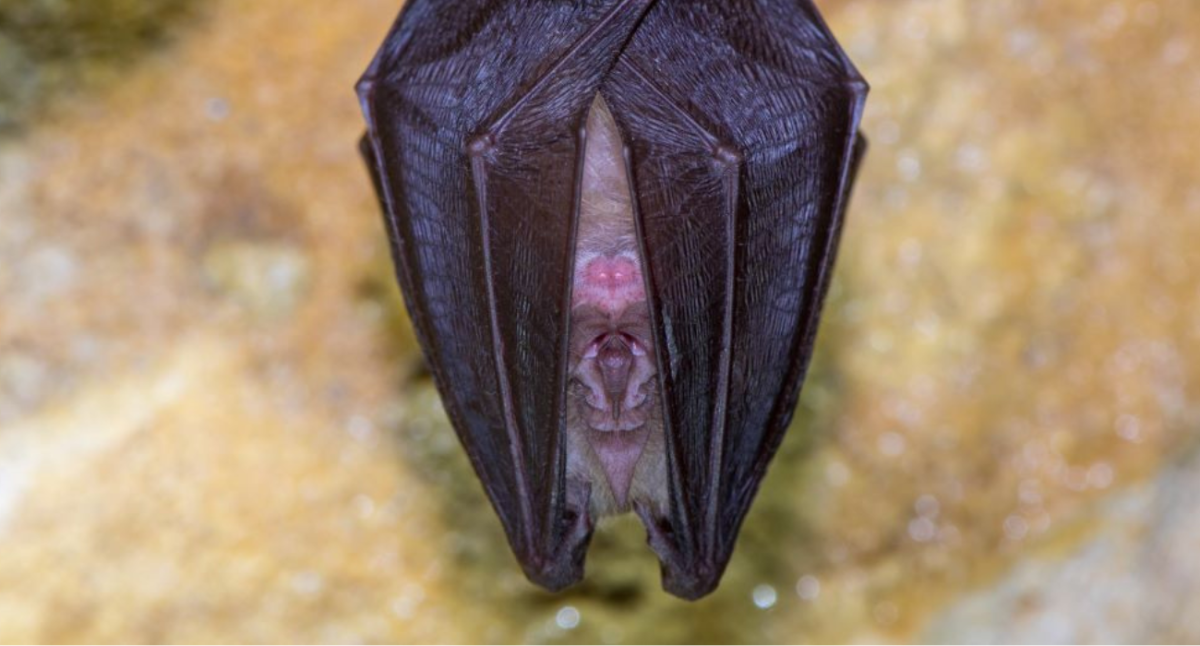
Rhinos in the Forest
The discovery of one of the UK’s rarest bats, the lesser horseshoe, brings the total number of bat species now recorded in the Forest to nine. Ed Leszczynski, our Forest Projects Manager, a professional ecologist with over 30 years’ experience in the sector, tells us about this fascinating and rare species.
Lesser horseshoe bats found in the Forest
Yes, we do have rhinos in the Forest, but before you all start running to the hills or donning your safari suits, the animals I am referring to are Rhinolophus hipposideros, commonly known as lesser horseshoe bats.
We had hoped that this enigmatic species was present in the Forest, and to our great and pleasant surprise we found them in one of our buildings in May 2023, and it is a maternity roost. This is a roost where pregnant female bats gather to have their babies, and we have at least 24 individuals. We know that it is a maternity roost due to the time of the year they were found, and the numbers encountered. According to the Vincent Wildlife Trust’s Lesser Horseshoe Bat Conservation Handbook, twenty or more bats found at this time of year is to be considered a maternity roost.
We have 18 species of bat within the UK, 17 of which are known to breed. Within Worcestershire and Warwickshire 14 species have been recorded and within the Heart of England Forest we have found nine species, with lesser horseshoe bats being the most recent discovery.
A rare and fascinating bat
Lesser horseshoes are now restricted in their distribution within the UK and are largely found in Wales, south-west England, and the West Midlands, with Warwickshire being on the eastern edge of their distribution. The number of known roosts (maternity or otherwise) within the county is low, and sadly the species has suffered large losses in the last century. However, in the last 20 years there has been an increasing population trend, although they remain one of our rarest bats.
We immediately knew we had found lesser horseshoes as soon as we saw them, as unlike most other UK bats, they hang freely upside down and resemble plums (they are one of our smaller bats). When heard on a bat detector their ‘warbling’ call is unmistakable. To me it sounds just like the Clangers from the children’s television series.

When making their echolocation call, this is emitted through their nose, which is a complex structure and provides the animal with its scientific name. Rhinolophus is derived from Greek meaning ‘nose crest’ and hipposideros means horse-iron - in other words, horseshoe. Listen here
Originally this species was a cave dweller, and they are still found in caves, but summer colonies are now regularly found in larger rural houses and agricultural buildings, and in a few cases in crypts beneath places of worship.
A habitat to call home in the Forest
The habitat they prefer to forage and feed in is exactly what we have and are creating in the Forest, which is a patchwork of grazed pasture and deciduous woodland with interconnecting hedgerows. This provides ideal conditions for their prey species which consists predominantly of small flies and moths, which they catch in flight whilst gleaning over vegetation.
Lesser horseshoes are particularly sensitive to disturbance caused by light and noise, so the darkness and silence found within the Heart of England Forest provides them with a secure and safe refuge, which covers a huge area.
We intend to monitor our newly found wards over the coming years and ensure that the Forest continues to provide the ideal conditions for this charming mammal, creating a stronghold for the species in the east of its range.

Help us grow a Forest where wildlife can thrive
You can play an important role in our vital mission of creating and conserving a huge broadleaf Forest where wildlife thrives by becoming a Friend of the Forest today
For a recommended minimum donation of just £5 a month, our Friends are kept up to date about how their support is helping to grow the array of Forest habitats, enabling animals, plants, and people to thrive. Find out about Forest Friendship.



